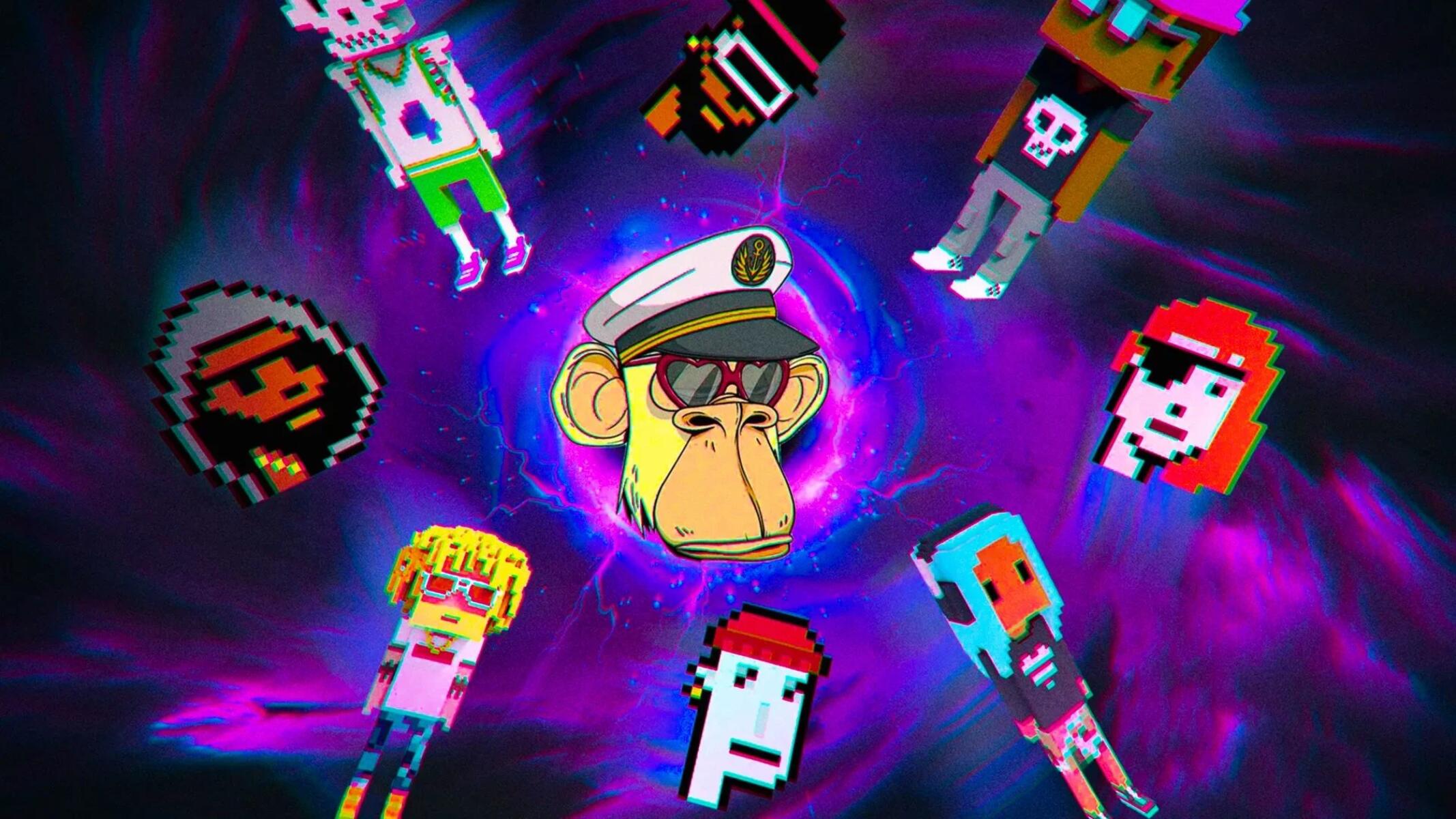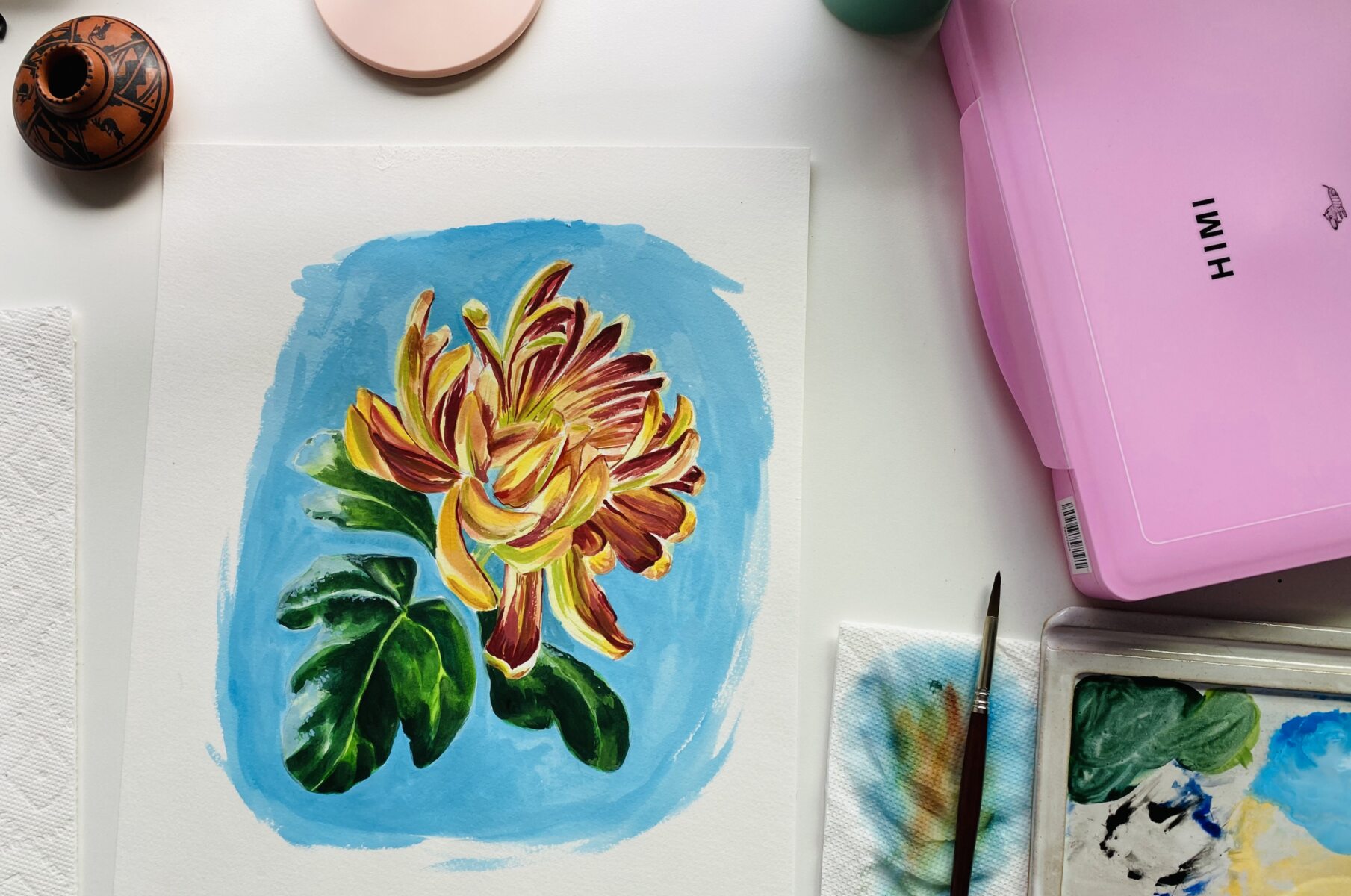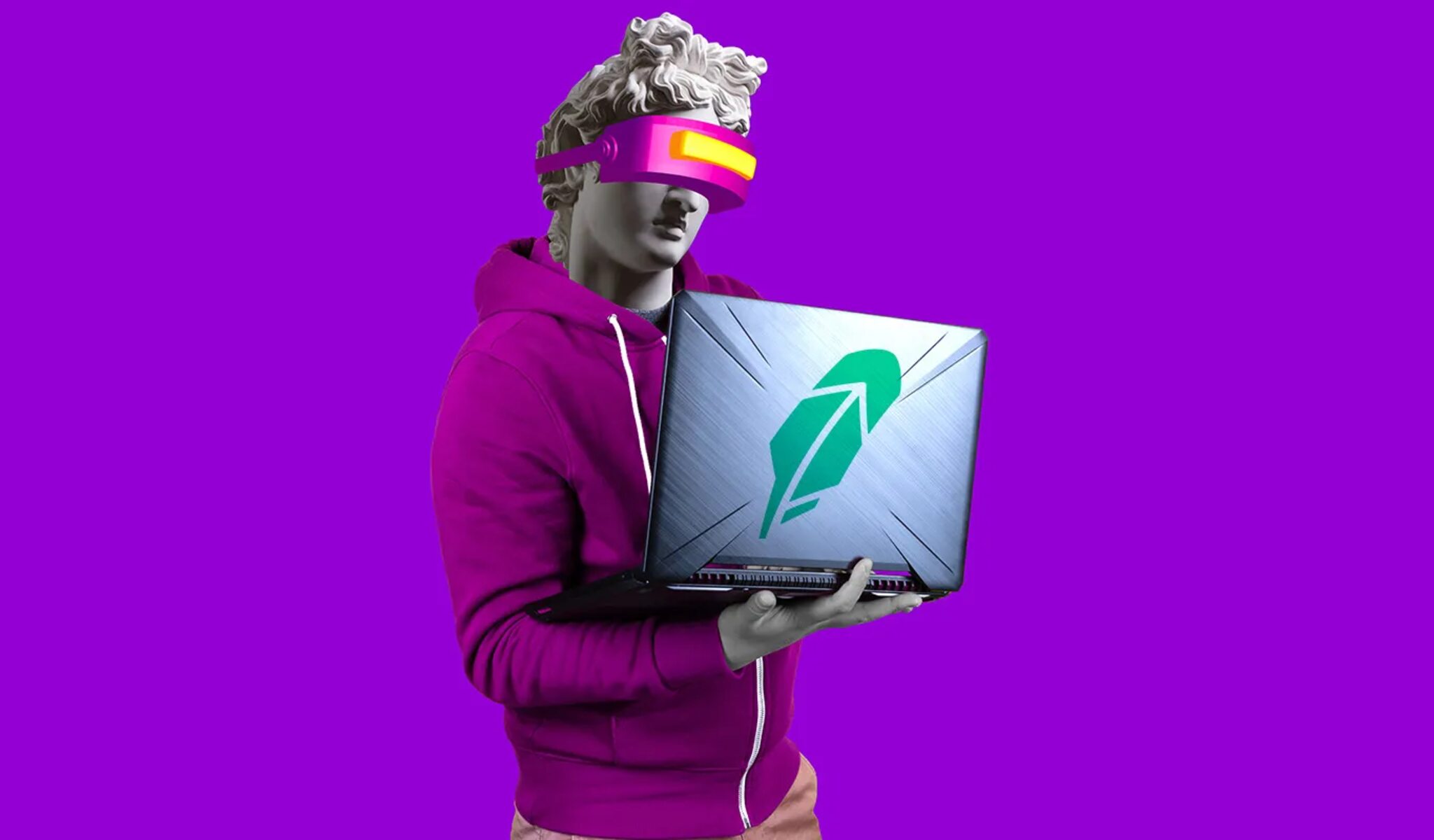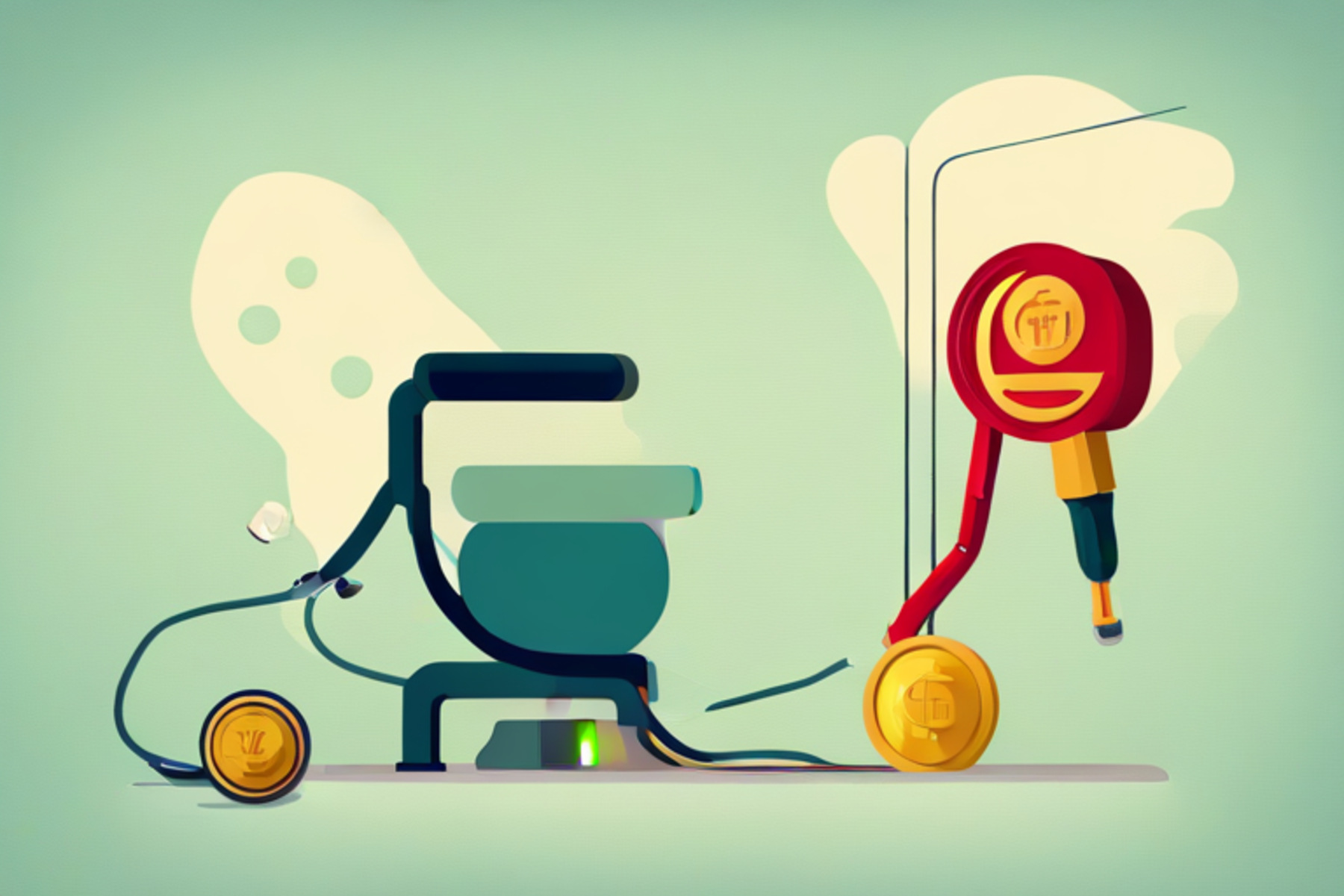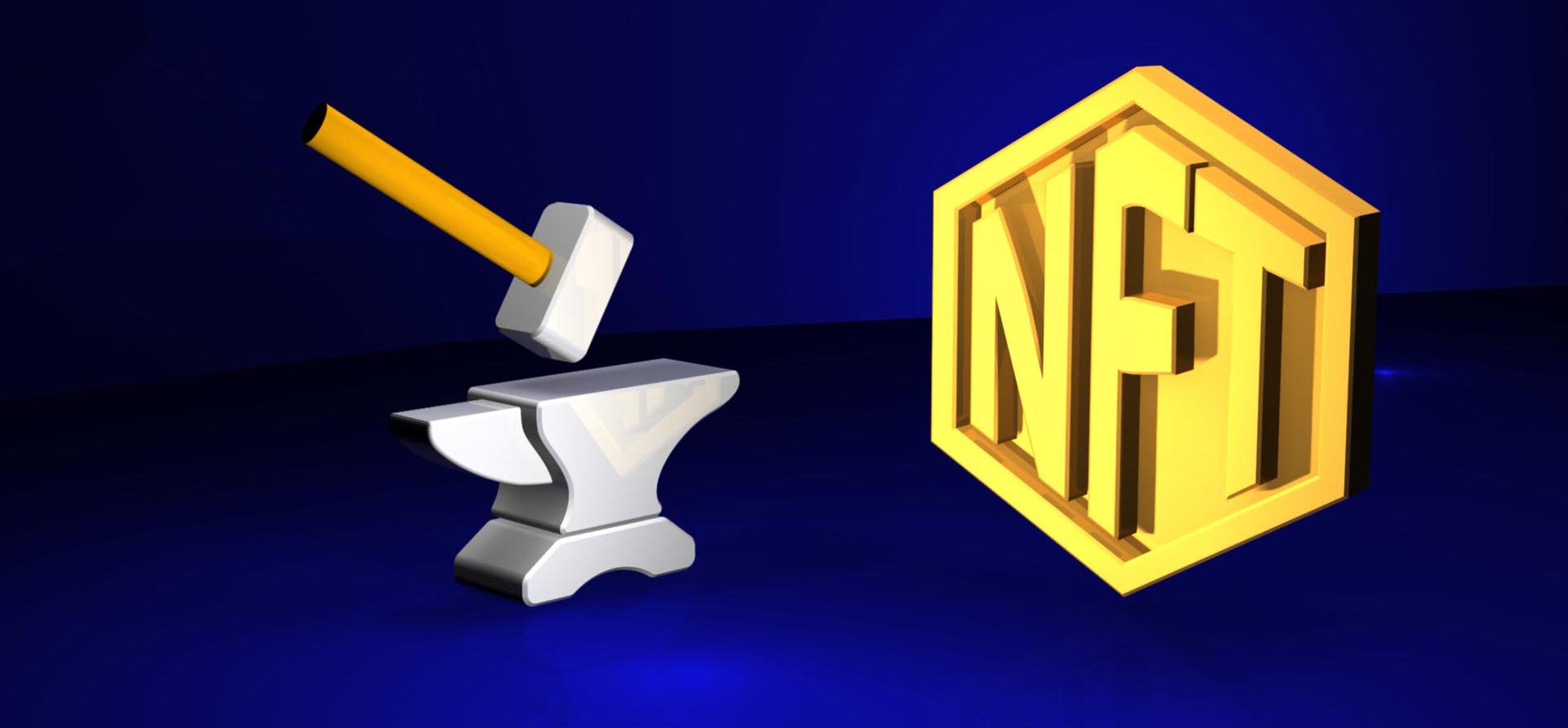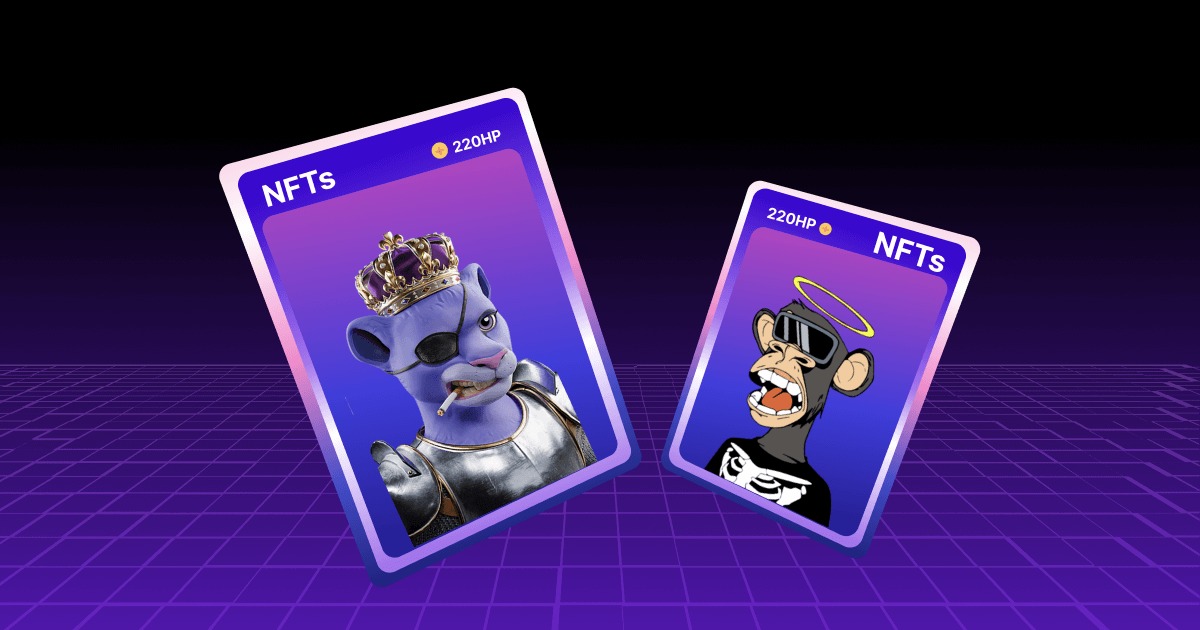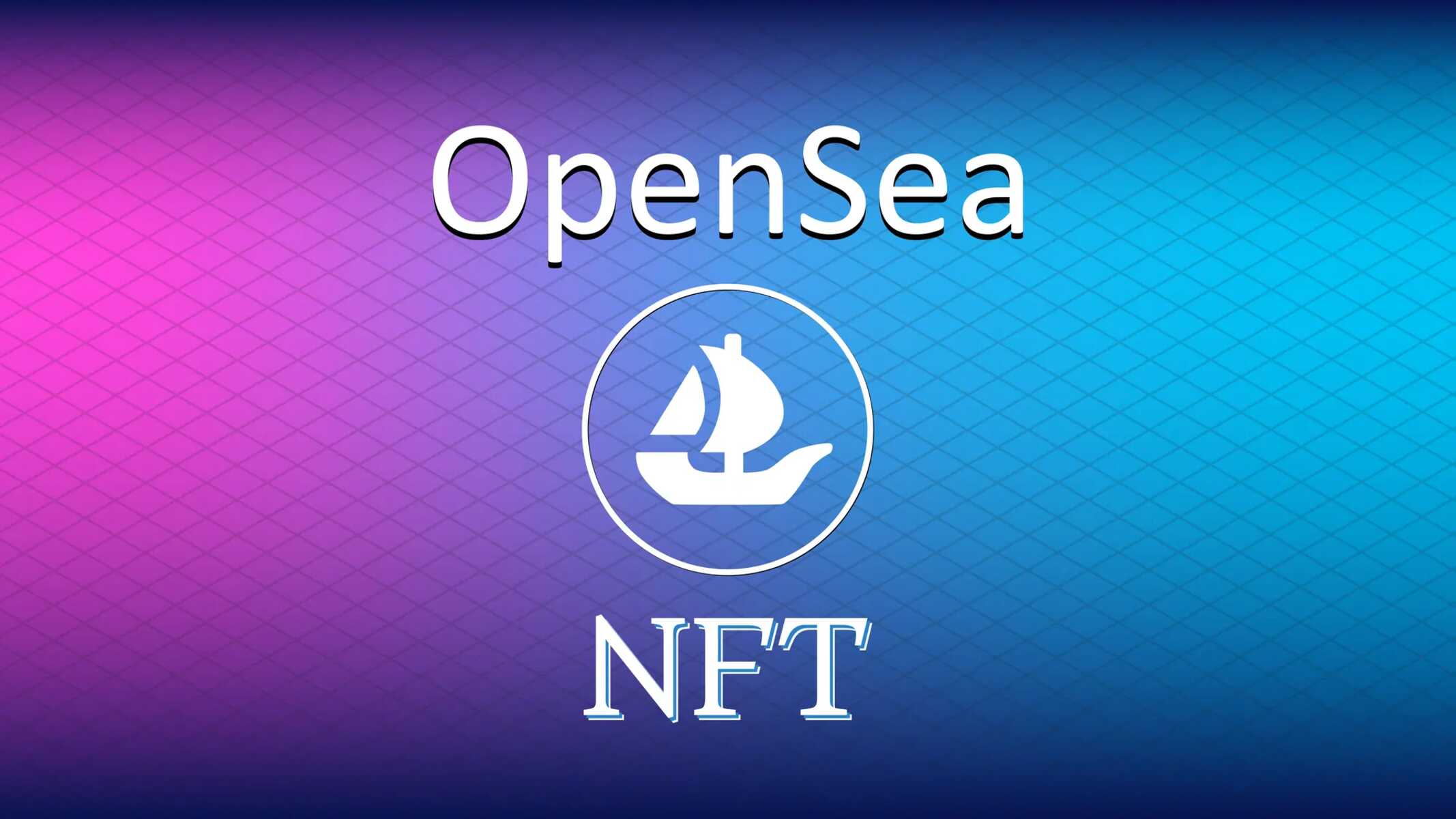Introduction
Welcome to the world of Non-Fungible Tokens (NFTs), where digital assets can be bought and sold with ease. NFTs have taken the art, collectibles, and digital asset markets by storm, providing a unique opportunity for creators and collectors to engage in a new form of digital ownership. One of the common misconceptions surrounding NFTs is that the process of selling them can be expensive. However, I’m here to tell you that it’s entirely possible to sell NFTs for free!
But first, let’s understand what exactly an NFT is. A Non-Fungible Token is a type of digital asset that represents ownership or proof of authenticity of a unique item, whether it’s a piece of art, a music track, a virtual real estate, or even a tweet. Unlike cryptocurrencies like Bitcoin or Ethereum, which are fungible and can be exchanged on a one-to-one basis, NFTs are unique and indivisible.
So, you might be wondering why you would want to sell your NFT for free. Well, the traditional method involves paying hefty fees to NFT marketplaces and platforms as a percentage of the sale price. This can eat into your profits significantly, especially for artists or creators who are just starting out. By finding ways to sell your NFT for free, you can retain more of the proceeds from your sale and have greater control over your digital assets.
Now, let’s explore the step-by-step process of how you can sell your NFT for free. Whether you’re an artist looking to showcase your work or an enthusiast hoping to capitalize on the NFT craze, these steps will guide you through the process and help you maximize your earning potential. Remember, the key is to be proactive and tap into the power of social media and online communities to promote your NFT effectively.
What is an NFT?
Before we dive into the process of selling NFTs for free, let’s take a closer look at what exactly an NFT is. A Non-Fungible Token (NFT) is a type of digital asset that represents ownership or proof of authenticity of a unique item. Unlike cryptocurrencies like Bitcoin or Ethereum, which are fungible and can be exchanged on a one-to-one basis, NFTs are unique and indivisible.
Think of an NFT as a digital certificate of ownership for a specific item, whether it’s a piece of art, a music track, a video clip, a virtual real estate, or even a tweet. What sets NFTs apart is the use of blockchain technology to secure and verify the ownership and provenance of these assets.
Blockchain, the underlying technology behind cryptocurrencies, is a decentralized digital ledger that records transactions across multiple computers. Each NFT has a unique identifier, known as a token, which is stored on the blockchain. This makes NFTs tamper-proof, transparent, and easily verifiable, ensuring that the owner has genuine ownership of the asset.
One of the key benefits of NFTs is their ability to provide artists, creators, and collectors with an entirely new way to engage with digital assets. With NFTs, artists can create and sell unique digital artworks, musicians can release limited edition music tracks, and even virtual real estate can be bought and sold.
The concept of “ownership” has also been revolutionized by NFTs. In the digital world, where content can be so easily copied and shared, NFTs offer a way to prove that you own a specific item. This has opened up a world of possibilities for creators and collectors, allowing them to monetize their digital creations and establish a direct connection with their audience.
It’s important to note that the value of an NFT is subjective and driven by demand. The price of an NFT can vary greatly depending on factors such as the reputation of the creator, the rarity of the item, and the perceived value by collectors. As with any market, trends can fluctuate, and it’s essential to do your research and understand the current market dynamics before buying or selling NFTs.
Now that we have a better understanding of what NFTs are, let’s explore how you can sell your NFT for free and take advantage of this exciting digital marketplace.
Why sell NFTs for free?
The traditional method of selling NFTs involves paying fees to NFT marketplaces and platforms, typically in the form of a percentage of the sale price. These fees can range anywhere from 2% to 50% or even higher. While these platforms provide valuable services such as hosting, promotion, and transaction facilitation, they can significantly impact the profits earned by artists and creators.
That’s why it’s advantageous to explore options to sell your NFT for free. By eliminating the fees associated with selling on NFT marketplaces, you can retain a higher percentage of the sales price, allowing you to maximize your earnings and have greater control over your digital assets.
Selling NFTs for free also allows artists and creators to establish a direct connection with their audience and maintain a sense of independence. By leveraging social media platforms, email marketing, and personal websites, artists can promote their NFTs directly to their fans, without relying solely on third-party marketplaces.
Moreover, opting for free NFT sales can be an effective strategy for emerging artists and creators who are yet to establish a substantial following or market presence. These individuals can leverage the power of social media and other online communities to build their brand and attract potential buyers. By eliminating transaction fees, they can provide an incentive for collectors to purchase their pieces and support their early career.
Another advantage of selling NFTs for free is the ability to experiment with different pricing strategies. Traditional platforms may have predetermined pricing structures, making it challenging to adjust prices based on market demand and artist preferences. However, by selling NFTs for free, creators have the freedom to set their own prices, run limited-time promotions, and explore various selling approaches to find what works best for them.
By bypassing traditional fees and platforms, artists and creators can also avoid the exclusivity requirements of some NFT marketplaces. Certain platforms may require artists to sell their NFTs exclusively on their platform, limiting their options and potentially hindering their exposure. Selling for free allows creators to list their NFTs on multiple platforms simultaneously, reaching a broader audience and increasing the potential for sales.
Ultimately, selling NFTs for free empowers artists and creators by providing them with more control, flexibility, and potential profitability. It allows them to establish their brand, engage directly with their audience, and retain a larger portion of their sales revenue. With the right marketing strategies and online presence, artists can effectively sell their NFTs for free and thrive in the evolving digital art marketplace.
Step 1: Choose an NFT marketplace
When it comes to selling your NFT for free, the first step is to choose a suitable NFT marketplace. While there are numerous platforms available, it’s crucial to select one that aligns with your goals, target audience, and desired level of exposure.
Here are a few considerations to keep in mind when choosing an NFT marketplace:
- Popularity: Look for marketplaces that have a significant user base and a strong reputation within the NFT community. Platforms like OpenSea, Rarible, and SuperRare have gained popularity among NFT buyers and collectors, making them ideal choices for showcasing and selling your digital assets.
- Marketplace Fees: Although the goal is to sell your NFT for free, it’s important to understand the fee structure of each marketplace. Some platforms charge lower fees or have fee-free options for specific transactions or promotions. Make sure to read the marketplace’s fee structure and determine if there are any hidden costs involved.
- Community and Engagement: Consider the community and engagement level within each marketplace. Look for platforms where artists and collectors actively participate in discussions, share insights, and collaborate. Being part of a vibrant community can help you gain visibility and connect with potential buyers.
- Creator Control: Evaluate the level of control you have as a creator on each platform. Some marketplaces may restrict certain actions or requirements, such as exclusivity or pricing limitations. Choose a platform that allows you to have the freedom to set your own prices, list your NFTs on other platforms, and maintain control over your digital assets.
- User-Friendly Interface: Consider the user interface and ease of use of each marketplace. A platform with a straightforward and intuitive interface can make it easier for you to list, manage, and promote your NFTs without much technical expertise.
Remember, you don’t have to limit yourself to just one marketplace. You can list and promote your NFTs on multiple platforms simultaneously to increase your exposure and attract different types of buyers.
Once you’ve done your research and selected the NFT marketplace(s) that align with your needs and preferences, you’re ready to move on to the next step: creating your NFT.
Step 2: Create an NFT
After choosing the NFT marketplace(s) where you want to sell your digital asset, the next step is to create your Non-Fungible Token (NFT). Creating an NFT involves transforming your unique digital item, whether it’s artwork, music, or any other type of digital content, into a token that can be bought, sold, and owned on the blockchain.
Here’s how you can create your NFT:
- Decide on the Content: Choose the digital item that you want to turn into an NFT. It could be a digital artwork, a music track, a video clip, a virtual real estate, or any other unique digital asset that you hold the rights to.
- Prepare your Digital Asset: Ensure that your digital asset is in the required format specified by the NFT marketplace. This may include file format, resolution, file size, and any other specific guidelines. Following these guidelines will help ensure your NFT is easily accessible and visually appealing to potential buyers.
- Select the NFT Marketplace and Minting Platform: Depending on the NFT marketplace you’ve chosen, you will need to find a compatible minting platform. OpenSea is a popular choice that supports a variety of file formats, while other platforms may have their specific minting services. Explore the minting platforms available and follow their instructions to upload and tokenize your digital asset.
- Upload and Tokenize your Asset: Use the chosen minting platform to upload your digital asset. The platform will guide you through the process of tokenizing it into an NFT. You may need to provide additional information such as a title, description, and any other metadata that will help potential buyers understand and appreciate your NFT.
- Add Royalties and Smart Contracts (Optional): Some platforms allow you to add royalties to your NFT, which means you will receive a percentage of the sale price each time your NFT is resold in the future. Additionally, you can explore smart contract functionalities to add extra value or features to your NFT, such as unlocking additional content for the buyer.
- Set a Price (Optional): Depending on the marketplace, you may have the option to set a fixed price or choose to sell your NFT through an auction or bidding process. Consider your goals and market demand when deciding on the pricing strategy for your NFT.
Once your NFT is successfully minted and ready for sale, it’s time to move to the next step: preparing your NFT for sale and maximizing its visibility on the chosen marketplace(s).
Step 3: Prepare your NFT for Sale
Once you have created your Non-Fungible Token (NFT), the next step is to prepare it for sale. Properly preparing your NFT will enhance its presentation, attract potential buyers, and increase the chances of a successful sale. Here’s how you can prepare your NFT for sale:
- Title and Description: Give your NFT an eye-catching title that accurately represents the content and captures the interest of potential buyers. Craft a compelling description that provides details about your NFT, including its unique qualities, inspiration, and any relevant background information. Use keywords in your description to improve discoverability.
- High-Quality Presentation: Present your NFT in the best possible light by ensuring high-quality visuals or audio representations. Use clear, crisp images, or well-mastered audio tracks to showcase the details and intricacies of your digital asset. This will attract buyers and give them confidence in their purchase.
- Add Metadata: Include relevant metadata to help potential buyers understand the context, meaning, and value of your NFT. This metadata could include the creation date, edition number (if applicable), the artist’s information, and any additional details that might add value to your NFT. Adding metadata also helps in verifying the authenticity and provenance of your digital asset.
- Tagging and Categorization: Properly tag and categorize your NFT to improve its visibility in marketplace search results. Use relevant keywords, genres, or themes that accurately describe your NFT to help potential buyers discover it more easily. This will ensure that your NFT reaches your target audience.
- Create Limited Editions (Optional): To increase the exclusivity and perceived value of your NFT, consider creating limited editions. This could involve selling a particular number of editions or offering variations, such as different color schemes or alternative versions of your digital asset.
- Consider Bundling: If you have multiple related digital assets, consider bundling them together as a package deal. This can provide added value to buyers and make your NFT more enticing compared to individual offerings.
- Collaborations and Partnerships: Collaborate with other artists or creators to create joint NFT projects. This can help expand your reach, tap into new audiences, and create unique and attractive offerings that stand out in the marketplace.
By taking the time to prepare your NFT effectively, you can make your digital asset more appealing to potential buyers and increase its chances of being sold. Once your NFT is ready, it’s time to move on to the next step: listing your NFT for free on the chosen marketplace(s) and promoting it to reach a wider audience.
Step 4: List your NFT for Free
After you have prepared your Non-Fungible Token (NFT) for sale, it’s time to list it on the chosen marketplace(s) for free. Listing your NFT for free allows you to avoid paying expensive fees and ensures that you retain more of the sales proceeds. Here’s how you can list your NFT for free:
- Select the Marketplace: Go to the NFT marketplace that you have chosen and navigate to the section for creating a new listing or putting your NFT up for sale. Ensure that you are familiar with the marketplace’s guidelines and requirements for listing an NFT.
- Upload your NFT: Follow the instructions provided by the marketplace to upload your NFT. This usually involves selecting the file you want to sell and providing additional information such as the title, description, and relevant metadata.
- Pricing: Set the price for your NFT. If the marketplace offers options for auctions or bidding, consider utilizing these features to potentially maximize your sale price. Research the current market trends and compare prices of similar NFTs to determine a fair and competitive price for your digital asset.
- Add Images or Videos: Include high-quality images, videos, or previews of your NFT to give potential buyers a better understanding of what they are purchasing. Visuals play a crucial role in grabbing attention and sparking interest.
- Set Terms and Conditions: Determine the terms of the sale, such as whether or not the buyer will receive any additional benefits or bonuses along with the NFT. Consider adding any special conditions that may make your NFT more appealing, such as unlocking additional content or future privileges for the buyer.
- Select Free Listing Option: Ensure that you choose the free listing option provided by the marketplace. Some platforms may offer premium listing features for an additional cost, but for the purpose of selling your NFT for free, stick to the basic free listing option.
- Review and Publish: Before publishing your listing, carefully review all the details to ensure accuracy. Double-check the title, description, pricing, and any other information you have provided. Once you are satisfied, publish your listing and make your NFT available for potential buyers to discover.
Remember to keep track of the listings you create and the platforms you use, as this will help you manage and promote your NFT effectively. Now that your NFT is listed for free, it’s time to promote it and reach out to interested buyers.
Step 5: Promote your NFT
Promoting your Non-Fungible Token (NFT) plays a crucial role in attracting potential buyers and increasing the visibility and demand for your digital asset. Here are some strategies to effectively promote your NFT:
- Utilize Social Media: Leverage the power of social media platforms such as Twitter, Instagram, and Facebook to showcase your NFT. Create visually appealing posts, share behind-the-scenes insights, and engage with your followers to build a community around your artwork or digital asset.
- Create Engaging Content: Develop engaging content related to your NFT, such as blog posts, articles, or videos. Share interesting stories or the inspiration behind your creation. This kind of content can attract potential buyers, spark their curiosity, and generate buzz around your NFT.
- Engage with Online Communities: Participate in online communities, forums, or Discord channels that are interested in NFTs and digital art. Engage in conversations, share your knowledge, and promote your NFT within relevant communities. Remember to respect the rules and guidelines of each community and avoid spamming or being overly self-promotional.
- Collaborate with Influencers: Collaborate with influencers, artists, or creators who have a significant following and are active in the NFT space. This can help expose your NFT to a wider audience and tap into their established fan base for potential buyers. Consider offering limited editions or special incentives for followers of the influencer to drive more engagement.
- Reach out to Media: Contact media outlets, bloggers, or journalists who cover NFTs and digital art. Share information about your NFT, your story, and any unique aspects that make your digital asset stand out. Getting featured in articles or interviews can provide valuable exposure and credibility for your NFT.
- Run Giveaways or Contests: Consider running giveaways or contests to generate buzz and excitement around your NFT. This can help attract attention, gain new followers, and potentially convert participants into buyers. Make sure to set clear guidelines and terms for the giveaway or contest to ensure a fair and transparent process.
- Network with Other Artists and Collectors: Build relationships with other artists and collectors in the NFT space. Attend virtual events, participate in online conferences, or join NFT communities to connect with like-minded individuals. Collaborations, cross-promotions, and word-of-mouth recommendations from fellow creators and collectors can help increase the exposure and visibility of your NFT.
- Update regularly: Keep your audience engaged by frequently updating them with news, progress, and new offerings. Whether it’s showcasing new artwork, announcing upcoming releases, or providing insights into your creative process, regular updates can maintain interest and loyalty in your NFT.
Remember that effective promotion requires consistency, creativity, and an understanding of your target audience. Tailor your promotional efforts to fit the nature of your NFT and the platforms you choose. By actively promoting your NFT, you can ensure that it reaches the right audience and increases the chances of a successful sale.
Step 6: Communicate with Potential Buyers
Communicating with potential buyers is a critical step in selling your Non-Fungible Token (NFT). Establishing a connection and engaging in meaningful conversations can help build trust, answer questions, and ultimately convert potential buyers into satisfied customers. Here’s how you can effectively communicate with potential buyers:
- Be Responsive: Respond promptly to messages, inquiries, and comments from potential buyers. Timely and professional communication demonstrates your dedication and commitment to providing excellent customer service.
- Provide Detailed Information: Be prepared to answer questions and provide additional information about your NFT. This includes details about the artwork, the story behind it, the technical specifications, and any unique features or benefits that might interest potential buyers.
- Showcase Authenticity: Establish and maintain the authenticity of your NFT. Offer transparency by sharing information about the creation process, ownership history, and any certifications or verifications that add credibility to your digital asset.
- Demonstrate Flexibility: Be open to negotiations and flexible with pricing or terms, especially if it aligns with your overall sales goals. Sometimes, accommodating potential buyers’ requests or concerns can lead to successful sales.
- Provide Excellent Customer Service: Offer a positive and professional customer service experience. Be polite, attentive, and helpful in addressing any concerns or issues potential buyers may have. A positive experience can leave a lasting impression and encourage referrals or repeat business.
- Showcase Testimonials or Previous Sales: If you have received positive feedback or have a track record of successful sales, share testimonials or highlight previous happy customers. Showcasing positive experiences can instill confidence in potential buyers and help overcome any hesitation they may have.
- Offer Additional Value: Consider offering incentives or bonuses to potential buyers to make the purchase more enticing. This could include exclusive digital content, access to future releases, or additional perks that enhance the value of owning your NFT.
- Stay Professional and Respectful: Maintain professionalism in all your communication. Be respectful of each potential buyer, even if a transaction does not ultimately take place. Word spreads quickly in the NFT community, and maintaining a positive reputation is essential.
- Follow Up: After engaging with potential buyers, follow up with them to see if they have any further questions or considerations. This shows proactive interest and may help nurture the buying decision.
Remember, the way you communicate with potential buyers can significantly impact their perception of your NFT and influence their purchasing decision. Building positive relationships, addressing concerns, and providing excellent customer service are key in driving successful sales.
Step 7: Complete the Sale
Completing the sale of your Non-Fungible Token (NFT) is the final step in the process. This involves executing the transaction, ensuring a smooth transfer of ownership, and providing a positive experience for the buyer. Here’s how you can successfully complete the sale:
- Agree on the Terms: Confirm and finalize the terms of the sale with the buyer, including the price, payment method, and any additional considerations. Ensure that both parties are clear on the agreed-upon terms to avoid any misunderstandings.
- Secure Payment: If you haven’t already received payment, proceed with the agreed-upon payment method. Use secure and trusted platforms to process the transaction to ensure the safety of both the buyer and seller.
- Transfer Ownership: Once payment has been received, transfer the ownership of the NFT to the buyer. Follow the guidelines provided by the marketplace to initiate the transfer process. This typically involves confirming the buyer’s wallet address and initiating the transfer of the NFT to their ownership.
- Provide Confirmation: Once the transfer is completed, provide the buyer with confirmation of the transaction. This can be in the form of a receipt or proof of ownership verification on the blockchain. The buyer should be able to verify their ownership of the NFT using the transaction details.
- Support and Follow-up: Offer support to the buyer after the sale to address any questions or concerns that may arise. Ensure that the buyer is satisfied and has successfully received and accessed their newly acquired NFT. Promptly address any post-sale inquiries or issues to maintain a positive buyer experience.
- Consider Reselling Rights: If reselling rights were included in the terms of the sale, monitor the NFT’s future transactions and ensure you receive any agreed-upon royalties or benefits if it is resold by the buyer.
- Maintain Documentation: Keep a record of the transaction details, including the payment confirmation, transfer of ownership, and any additional documentation related to the sale. This documentation can be useful for future reference or in case any disputes arise.
- Request Feedback: After the sale is complete, consider asking the buyer for feedback on their experience. This feedback can be valuable for improving your future sales process or understanding what aspects of your NFT resonated with the buyer.
- Continue Promoting: Even after completing the sale, continue to promote your NFT and engage with your audience. Building relationships with buyers and maintaining a strong presence in the NFT community can lead to future sales and opportunities.
By effectively completing the sale, you can ensure a smooth and positive experience for both you as the seller and the buyer of your NFT. Providing support, clear communication, and prompt action will help establish your reputation as a reliable seller in the NFT marketplace.
Conclusion
Congratulations! You have successfully navigated the process of selling your Non-Fungible Token (NFT) for free. By following the steps outlined in this guide, you have learned how to choose an NFT marketplace, create your NFT, prepare it for sale, list it for free, promote it, communicate with potential buyers, and complete the sale.
By opting to sell your NFT for free, you have taken control of your digital assets and maximized your earnings. Avoiding expensive fees associated with traditional marketplaces allows you to retain a larger portion of the sales proceeds and maintain independence in the NFT marketplace.
Remember that successfully selling an NFT requires more than just listing it for sale. Promoting your NFT, engaging with potential buyers, and providing excellent customer service are crucial elements in attracting interest and converting potential buyers into satisfied customers.
As the NFT market continues to evolve and grow, it’s essential to stay up to date with the latest trends, platforms, and strategies. Continually explore new ways to market your NFT, engage with the community, and adapt to the changing dynamics of the NFT space.
Whether you’re a digital artist showcasing your unique creations, a musician releasing limited edition tracks, or a collector seeking to monetize your digital investments, selling NFTs for free provides you with the opportunity to build your brand, establish connections, and unlock the potential for financial success.
Embrace the exciting world of NFTs, harness your creativity, and leverage the power of technology and online communities to thrive as an NFT seller. Now, it’s time to take what you’ve learned and put it into practice. Best of luck in your NFT selling journey!







